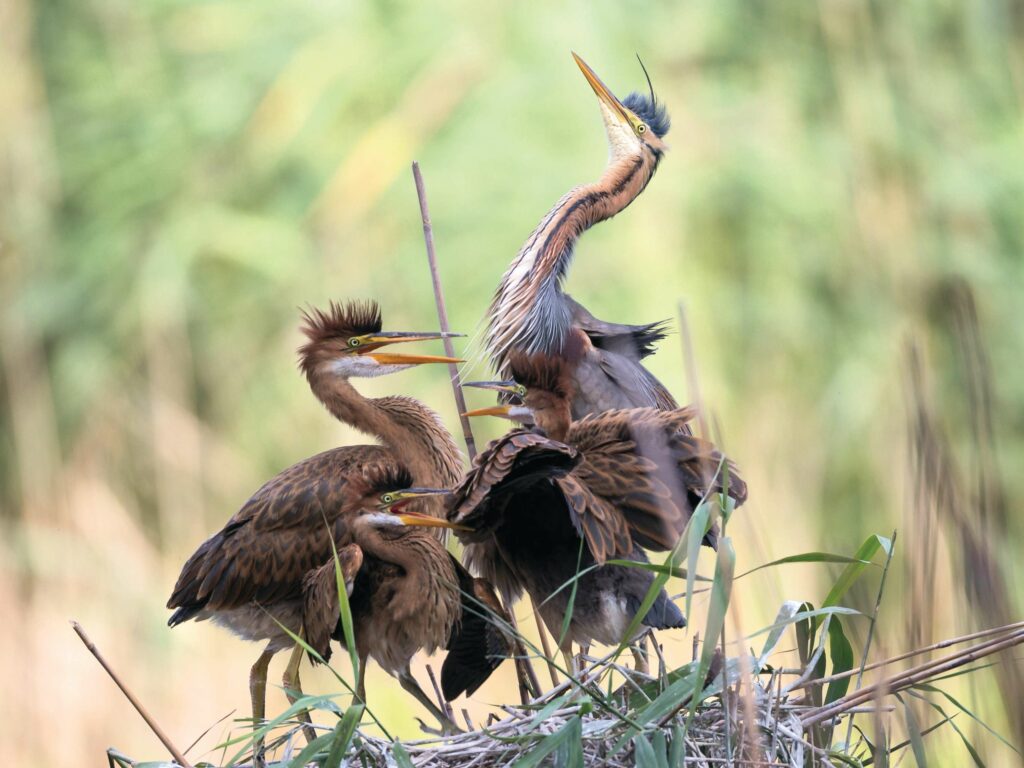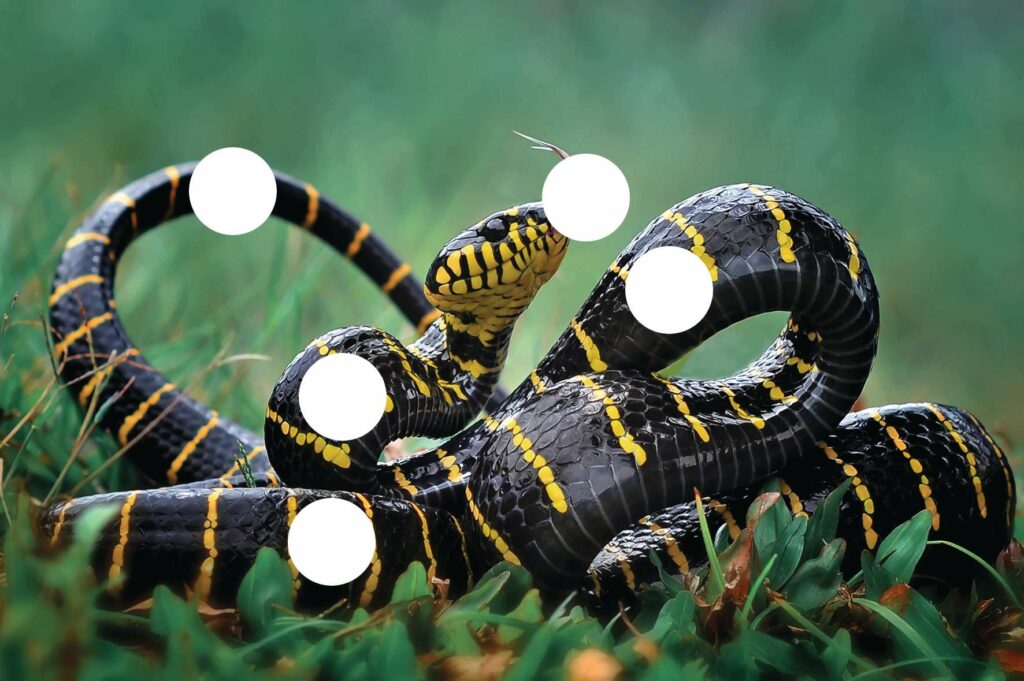
I am always very happy when I spot the first herons
For years I visited a small 220ha nature reserve on the Rhine track in Baden-Württemberg. The purple heron, which is rare in Germany, breeds there. There are only about 60 breeding pairs in the country. After their arrival, I was able to observe, document and photograph them nest building, mating, occupying their nests and raising their young.
I am always very happy when I spot the first purple herons at the end of March. It means that the herons that have arrived have successfully covered the long journey from the Sahel in North Africa.
Atmospheric shots in fog or rain are particularly successful in the morning. Another attractive time is in the evening, when the sun illuminates the reed zone and purple herons fly overhead.
As they live very hidden in the reeds, it has taken me years to get the images that I want. Last year, they were on a nest that was quite close to shore, so I had this amazing opportunity.
Frederic Bauer, Germany
Treating birdseed
After reading the article about the bird disease trichomonosis spreading through birdfeeders in the November issue, I had a thought. On the whole, the seed used to feed garden birds is commercially produced and packaged – no doubt this has already been thought of, but is there any way the seed could be treated against trichomonosis?
I, like most nature watchers, have noticed the decline in bird populations over the last 10 years probably. This year, I set out to visit parks and National Trust and RHS gardens to see what was there. All of these places used to be alive with birds, but the only things I saw in abundance were wood pigeons and corvids. Likewise, I’ve noticed that the numbers of swifts and house martins near me have greatly reduced in number.
This may read like the ramblings of an old man but I am concerned that the problem may be underestimated.
From anonymous, via email
FROM TOM STEWART AT THE BTO:
Hmm, good question. Antibiotics/antiprotozoals can be used to treat trichomonosis under close medical supervision and in a very restricted range of high-intervention contexts. I’m not aware of any research into whether food can be treated. Even if a vaccine were available, administering it to an enormous population of wild birds would not be practical.
What about Shropshire?
Why was there no option to vote for one of the many beautiful wildlife havens in Shropshire? On the Stiperstones, I have had the pleasure of hearing and seeing cuckoo, stonechat, winchat, red grouse, curlew and even a pine marten – and all with not a soul in sight. It is an incredible place.
Preece Killick, via Instagram
SARAH MCPHERSON REPLIES:
I appreciate Shropshire is a beautiful spot and agree it was a shame it wasn’t included. While putting this feature together we endeavoured to achieve as broad a geographical spread as we could, while remaining faithful to our contributors’ favourite locations, many of which were deeply personal. The Stiperstones does indeed look like a wonderful wild place to explore; the rock formations and panoramic views look spectacular. One to add to the list – particularly if there’s a chance of seeing a pine marten.
Picking up on penguins
I read the erect-crested penguins news story (January 2023) with interest. The idea of a “snapshot” in the transition between a two-egg and one-egg strategy is surely a non-starter, whatever may happen in the future, since evolution only knows about the present.
And referring to other penguin species that “reduce their clutch” presupposes they used to lay two eggs once, which isn’t gone into. If the survival once hatched was affected by predation, this might favour hatching two eggs, unless the chick needed to be fast-growing in which case one might be favoured.
So far there’s nothing to account for the behaviour, and the last paragraph of the article is unsatisfactory.
Martin Ricketts, Oxfordshire
STUART BLACKMAN REPLIES:
If there is a lack of detailed explanation in my article, it’s largely because very little is known about the selection pressures that gave rise to this remarkable reproductive strategy, which is in turn due to the practical difficulties of working on this remote species. You may wish to seek out the original PLOS One scientific paper itself (bit.ly/ErectCrestedPenguinEggs), which sets out the biologists’ thinking in more detail, including why they believe the penguins’ ancestral clutch originally contained two eggs of similar size.
Hold back the hordes
I have serious reservations about your Britain’s 60 favourite places for wildlife feature (January 2023), as it will just encourage yet more people to visit these sites, resulting in more disturbance to the wildlife and damage to the habitats; some reserves already feel more like zoos.
On the one hand, a great concentration of visitors at a small number of honeypot sites, where they can be professionally managed (eg Minsmere and Leighton Moss) would draw visitors away from more sensitive and hard-to-manage places. On the other, not publicising and promoting hotspots would take the pressure off these top-class habitats and spread the load.
It’s great so many people go birding but there are almost too many relative to the number of decent places to enjoy wildlife. The solution is to somehow get more birders etc to put time and money into restoring or creating additional good habitats in their own localities. Result: hopefully more birds and other wildlife, and locally busy people who are not emitting so much carbon travelling around the country.
Dave S, via email
SARAH MCPHERSON REPLIES:
As David Attenborough often says, if we are to protect the natural world, we need to care about it. The idea of our 60th birthday feature was to celebrate the UK’s wild places and, in doing so, inspire the desire to engage with and protect them. Minimising disturbance at sensitive sites is, of course, incredibly important, and we would always encourage readers to be as responsible as possible when visiting the wild.
Answers to Spot The Difference

GET IN TOUCH
wildlifeletters@immediate.co.uk
Post
BBC Wildlife, Eagle House Bristol, BS1 4ST
By contacting us you consent to let us print your letter in BBC Wildlife. Letters may be edited.